Powerpoint presentation
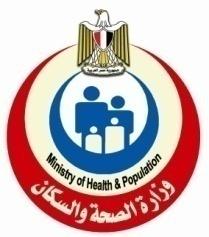

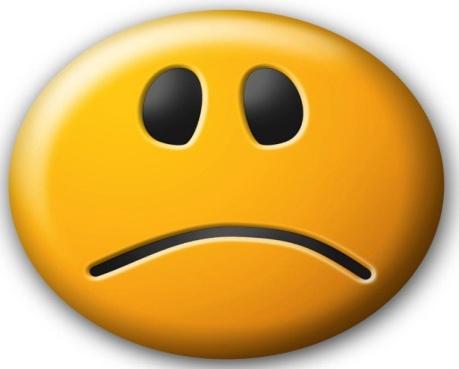
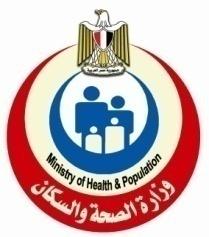

Risk factors
Common types of depression
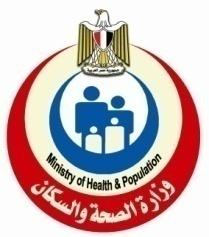

Causes of Depression
Personality Characteristics
low self-esteem, pessimistic world view, low stress
Whether this represents a psychological predisposition or
an early form of the illness is not clear.
Continues to be studied extensively Current thinking explores problems in brain functioning
in the following areas: Limbic system, neurotransmitters and neurons, hormones and the endocrine system
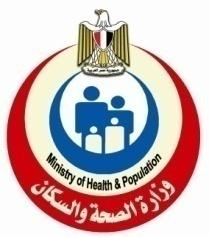
Female > Male (2:1)
Predominant age: 1st onset usually in late 20s (earlier in women than
Elderly (≥65)
Presence of chronic disease(s)
Recent myocardial infarction/stroke
Peptic ulcer disease
Strong family history (depression, bipolar, suicide, alcoholism, other
substance abuse)
Domestic abuse or violence
Substance abuse and dependence
Losses and stressors
Single, divorced, or unhappily married
Common Types of Depression
Major Depression
Dysthymia
Bipolar Disorder
Seasonal Affective Disorder (SAD)
others
Major depression Major depression
DSM-IV (TR) diagnostic criteria for major depression: At least five of the
following symptoms for 2 weeks (criterion 1 or 2 essential)
pervasive depressed mood
marked loss of interest or pleasure
significant appetite or weight loss or gain (usually poor appetite)
insomnia or hypersomnia (usually early morning waking)
psychomotor agitation or retardation
fatigue or loss of energy
feelings of worthlessness or excessive guilt
impaired thinking or concentration; indecisiveness
suicidal thoughts/thoughts of death or suicide
Diagnostic and Statistical Manual (4th edn revised). Washington, DC: American Psychiatric Association,
Minor depression
The diagnosis of minor depression is based on a total of two to four
symptoms from the above list, including 1 and 2.
Minor depression is basically a condition where fluctuations of
symptoms occur with some vague somatic symptoms and a transient
lowering of mood that can respond to environmental influences.
Suicidal feelings are fleeting, and delusions and hallucinations are
absent. These patients usually respond in time to simple psychotherapy,
reassurance and support. However, care should be taken lest they move
into major depression
People with this illness are mildly
depressed for years. They function fairly well on a daily basis but their relationships suffer over time.
More prevalent in women, 4% prevalence in women, 2%
Onset is usually in childhood, adolescence or early
Often is a superimposed Major Depression
High prevalence of substance abuse in this group
Bipolar Disorder
People with this type of illness change back and forth
between periods of depression and periods of mania .
Symptoms of mania may include:
Distractibility
Impulsivity
Grandiosity
Flight of ideas
Activities
Sleeps
Talkativeness
Season Affective Disorder
is characterized by episodes of hypersomnia , anergia ,
and a craving for sweets associated with a particular time of the year. It usually occurs in the winter months and resolves in the spring
Depression in the elderly
Depression in children
Premenstrual dysphoric disorder
Mother's blues
Postpartum depression
Depression in the elderly
C/P:
Depression is often missed in the elderly because it is
atypical and less expressive. Depression can have bizarre features in the elderly and may be misdiagnosed as dementia or psychosis. Agitated depression is the most frequent type of depression in the aged. Features may include histrionic behaviour, delusions and disordered thinking.
Treatment:
Psychotherapy & Pharmacologic
Depression in children
C/P:
Sadness is common in children but depression, although not
as common, does occur and is characterised by feelings of helplessness, worthlessness and despair. Parents and doctors both tend to be unaware of depression in children.
Treatment:
Referral: Depressed adolescents are a serious suicide risk.
Referral of these patients to an experienced child psychiatrist is advisable.
Premenstrual Dysphoric Disorder
A severe form of premenstrual syndrome (PMS)
C/P:In most menstrual cycles during the past year,
five or more of specific somatic &affective symptoms were present for most of the time during the last week of the luteal phase, began to remit within a few days after the onset of the follicular phase, and were absent in the week post menses
Treatment:
Life style modification
Psychotherapy approaches
Pharmacological
Mother's Blues
50% to 80% of women experience transient "baby
blues" within the first two weeks following delivery
The postpartum "blues" is defined as a transient, self-
limited mood disturbance occurring within the first 2 weeks after delivery
C/P:
Symptoms include sadness, mood lability, crying, anxiety,
insomnia, poor appetite, and irritability.
Treatment:
Treatment consists of support and reassurance.
Postpartum Major Depression (PMD)
A major depressive episode associated with childbirth. Affects
1-10 childbearing women. Onset can begin 24 hours to several months after delivery,
C/p: Presents with depressed mood, anhedonia, sleep
disturbance, ↓ energy, weight loss, a sense of hopelessness or guilt, ↓ concentration, thoughts of suicide
Treatment:
Psychotherapy & Pharmacologic
Referral: Any woman with suicidal/ infanticidal ideation
Prevention: Identify those at risk prior to delivery.
The diagnostic approach
Depression can be associated with many illnesses but
it is important to realise that the somatic symptoms may be the presentation of depressive illness and thus ‘undifferentiated illness' is a feature. The patient tends to complain of aches and pains, gastrointestinal symptoms and other similar symptoms rather than emotional problems.
History including screening for depression
Physical examination to exclude the differential
The US Preventive Services Task Force (USPSTF) 2009
guidelines and the American Academy of Family Physicians recommend screening for depression in the primary care setting using a two-question initial screening test to detect the presence of depressed mood and anhedonia ("Over the past 2 weeks, have you felt down, depressed or hopeless?" and "Over the past 2 weeks, have you felt little interest or pleasure in doing things?").
Depression Screening Instruments
Commonly Used in PHC
Beck Depression Inventory Center for Epidemiologic
Studies Depression Screen (CES-D)
General Health Questionnaire Medical Outcomes Study
Depression Screen Patient Health Questionnaire (PHQ-9)
Primary Care Evaluation of Mental Disorders
Symptom-Driven Diagnostic System–Primary Care
Zung Self-Assessment Depression Scale
PATIENT HEALTH QUESTIONNAIRE (PHQ-9)
Over the last 2 weeks, how often have you been
bothered by any of the following problems?
(use "✓" to indicate your answer)
1. Little interest or pleasure in doing things
2. Feeling down, depressed, or hopeless
3. Trouble falling or staying asleep,
or sleeping too much
4. Feeling tired or having little energy
5. Poor appetite or overeating
6. Feeling bad about yourself — or that
you are a failure or have let yourself
or your family down
7. Trouble concentrating on things, such as reading the
newspaper or watching television
8. Moving or speaking so slowly that other people could
have noticed. Or the opposite — being so fidgety
or restless that you have been moving around a lot
9. Thoughts that you would be better off dead,
or of hurting yourself in some way
add columns:
Not difficult at all
Somewhat difficult
Very difficult
Extremely difficult
10. If you checked of any problems, how
difficult have these problems made it for
Not difficult at all
Somewhat difficult
you to do your work, take care of things at
Very difficult
home, or get along with other people?
Extremely difficult
Provisional Diagnosis
Treatment Recommendation
Minimal symptoms*
Support, educate to call if worse;
return in 1 month.
Minor depression gg
Support, watchful waiting
Antidepressant or psychotherapy
Major depression, mild
Antidepressant or psychotherapy
Major depression, moderately
Antidepressant or psychotherapy
Major depression, severe
Antidepressant and psychotherapy (especially if not improved on monotherapy)
Obtained
Differential diagnoses of depression:
1-Psychiatric condition:
Anxiety disorder
Schizophrenia
Drug and alcohol abuse
2-Organic disorders :
Malignancy (e.g. lung, pancreas, lymphoma)
Hypothyroidism
Hyperparathyroidism
Other endocrine disorders (e.g. Cushing's, Addison's)
Anaemia, especially pernicious anaemia
Post-infective states (e.g. EBM)
Cerebrovascular disease
Parkinson's disease
Congestive cardiac failure
Systemic lupus erythematosus
Drugs (which may cause depression)
antihypertensives
benzodiazepines (e.g. diazepam)
antiparkinson drugs
corticosteroids
cytotoxic agents
oral contraceptives/progestogen
Important considerations from the outset are: Is the patient a suicide risk?
Does the patient require inpatient assessment?
Is referral to a specialist psychiatrist indicated?
Suicide screening should include assessing current level of depression, severity of
symptoms, feelings of hopelessness; current suicidal thoughts and behaviours (as well as past attempts), use of drugs or alcohol (which can increase levels of impulsivity and worsen dysphoria), current levels of anxiety and agitation, access to lethal means (especially firearms), presence of psychosis (command hallucinations, poor reality testing), recent acute stressors, and presence (or absence) of a psychosocial support system (APA, 2003).
The basic treatments are:
Psychotherapy.
Pharmacological agents.
ECT. Note: Reassurance and support are needed for all
depressed patients.
Initiation of treatment of depression
Useful guidelines
Mild depression: psychotherapy alone, especially CBT,
may suffice and may be more effective than drug therapy but keep medication in mind.
Moderate to severe depression: psychotherapy plus
antidepressants is recommended.
Reassurance and support are needed for all depressed
Psychosocial Treatments
commonly used antidepressants
Generic Name
Brand Name
Common Dosage Range
Common Adverse Effects
Tricyclic antidepressants
Imipramine
50-300 mg daily
Sedation, dry mouth, orthostatic hypotension, prolonged QT interval
Desipramine
50-300 mg daily
Similar to but less than
irmpramine; commonly used in the elderly
50-150 mg daily
Fewer adverse effects compared with imipramine, commonly used in elderly
Selective serotonin reuptake inhibitors
Fluxetine
20-40 mg daily
Tremulousness, gastrointestinal upset,
difficulty sleeping, sexual Dysfunction
Paraxetine
2-50 mg daily
Same as fluoxetine, usually more sedating
Citaloprain
20-60 mg daily
Less sexual dysfunction; loose stools are common
Serotonin-norepinephrine reuptake inhibitors
Nefazodone
150-300 ing twice daily
None consistently (no effect on sexual dysfunction)
Ventafaxine
75-225 ing daily (SR) or in divided doses
Sedation, hypertension
50-500 ing daily or in divided doses
Sedation (useful at low doses for sleep), orthostatic Hypotension
15-90 mg daily
Insomnia , anorexia ,weight gain ,somnolence ,lethargy
300-450 ing divided three times daily or
Agitation, lowered seizure Threshold
twice daily (SR form)
SSRIs are often considered the first-line treatment for
depression due to their relatively better safety profile and ease of administration.
Acute management
Review patients every 1-2 weeks – some reviews may be done
by telephone or by nurse
compliance with drug treatment
side-effects and suicidal risk
Educate patients about:
the nature of depressive disorders
side-effects and benefits of medication
Treatment should be continued for at least 4 weeks (6
weeks in the elderly)
Non-response at 4 weeks, check:
adequacy of treatment including dose and non-compliance
initial diagnosis for possible additional conditions requiring
possible social factors
Partial response after 4 weeks' adequate treatment:
continue treatment with the same antidepressant for another 2
No response after 4 weeks, or partial response after 6
weeks' adequate treatment: increase the dose switch treatment to another antidepressant class consider referring patients with ‘atypical' (mood-reactive) major
depression for MAOI treatment
Elderly patients – consider continuing treatment for up to 9
weeks before changing
Failure to respond to a second antidepressant, options
include: add psychotherapy refer for consideration for augmenting agent or electroconvulsive
Continuation treatment
Continue drug at the same dose for a minimum of 6
months after remission of major depression (12 months in
Patients with recurrent major depression should go on to
receive maintenance antidepressant drug treatment
Patients with residual depressive symptoms and other
factors increasing the risk of relapse of major depression: continue treatment for longer, with duration taking into account the
persistence of these factors
Relapse during the continuation phase:
treat using the same principles applied to non-response to
Maintenance treatment
it is indicated for patients with:
three or more episodes of major depression in the last 5 years more than five episodes altogether fewer recurrent depressive episodes with persistent risk factors for
relapse/recurrence
Maintain the same dose of antidepressant as used to treat the acute
Treat for at least 5 years and possibly indefinitely Lithium is an effective second-line alternative to antidepressants for
maintenance treatment
Recurrence of depression:
treat using the same principles applied to non-response to treatment
Stopping treatment
Warn patients that discontinuation reactions are possible when
stopping treatment. The pattern of symptoms usually differs from
re-emergence of the original depressive disorder; common
symptoms are: balance and sensory disturbance gastrointestinal symptoms insomnia and mood abnormalities
Taper the dose (or frequency) over a minimum of 4 weeks if
possible when antidepressant drug treatment is to be stopped
Stopping treatment
Rapid discontinuation may be required for severe adverse
reactions or if the patient switches into a hypomanic state
Taper the dose over 6 months in patients who have been on
longer-term maintenance treatment
If a discontinuation reaction occurs:
explain and reassure if this is not sufficient and for more severe reactions, restart the
antidepressant and taper more slowly
Referral
1- If the patient is expressing a suicidal intent or if there was a recent suicide attempt 2- If the patient is elderly, confused and presentation of the history is unclear 3- If the presenting symptoms of the disorder are severe, e.g., severe weight loss or weight
gain , severe physical damage from drinking, severe withdrawal symptoms, several unsuccessful attempts to quit drinking.
4- If the diagnosis is not clear 5- If the treatment fails after the patient has received an appropriate medication trial 6- If the management requires hospitalization or intensive treatment e.g. extreme hostility,
aggression or homicide
7- If there is one of comorbidity with severe physical or other mental disorders
Prognosis
One episode – 50% chance of recurrence
Two episodes – 70% chance of recurrence
Three or more episodes - >90% chance of recurrence
Important points
Depression is an illness.
It is more common than realised.
It just happens; no one is to blame.
It affects the basic functions of energy, sex, appetite and
It can be lethal if untreated.
It can destroy relationships.
The missing chemical needs to be replaced.
It responds well to treatment
Source: http://www.egyfellow.mohealth.gov.eg/Fileupload/depression.pdf
Bey-OTC-copy_Layout 1 11-03-24 2:12 PM Page 1 What are over-the-counter drugs? BEYOND BASIC Over-the-counter drugs are medications sold directly to consumers through pharmacies, grocery andconvenience stores without a prescription. The availability of remedies is as ubiquitous as the conditions for which consumers may seek assistance and are offered in the form of pharmaceutically producedand naturally occurring (herbal) products.
Report of the Independent Expert in the Matter of the Public Utilities Commission Initial Decision In the 2008 Annual Review Proceeding for Belize Electricity Limited Jonathan A. Lesser, Ph.D.* Initial Draft: 6 June 2008 Final Report: 11 June 2008 * Jonathan A. Lesser, Ph.D., is a Partner with Bates White, LLC, an economic and litigation consulting firm headquartered in Washington, DC. However, the views, findings, conclusions, and recommendations expressed herein are those of Dr. Lesser alone, and do not necessarily reflect the views of his colleagues or of Bates White, LLC.















